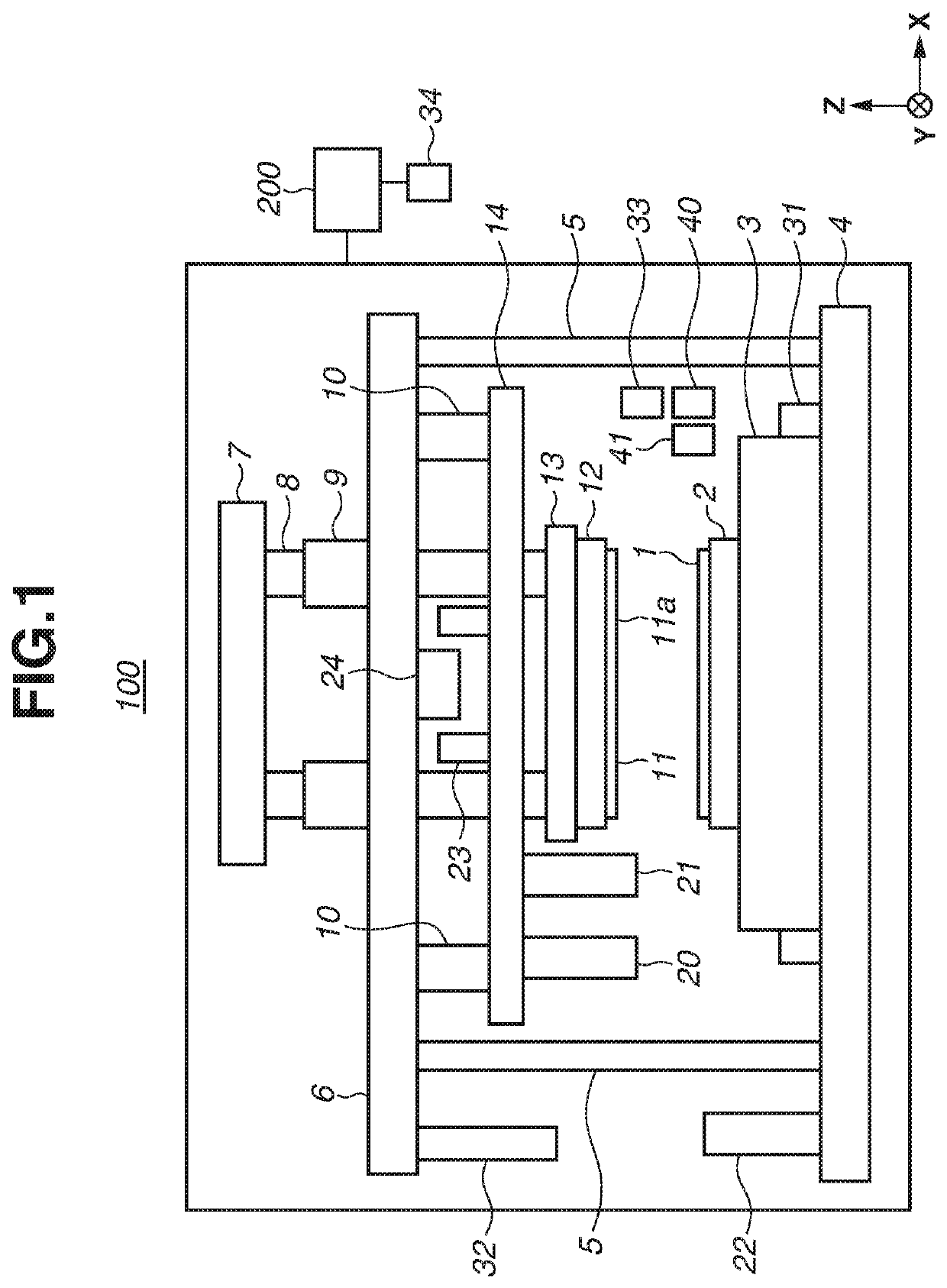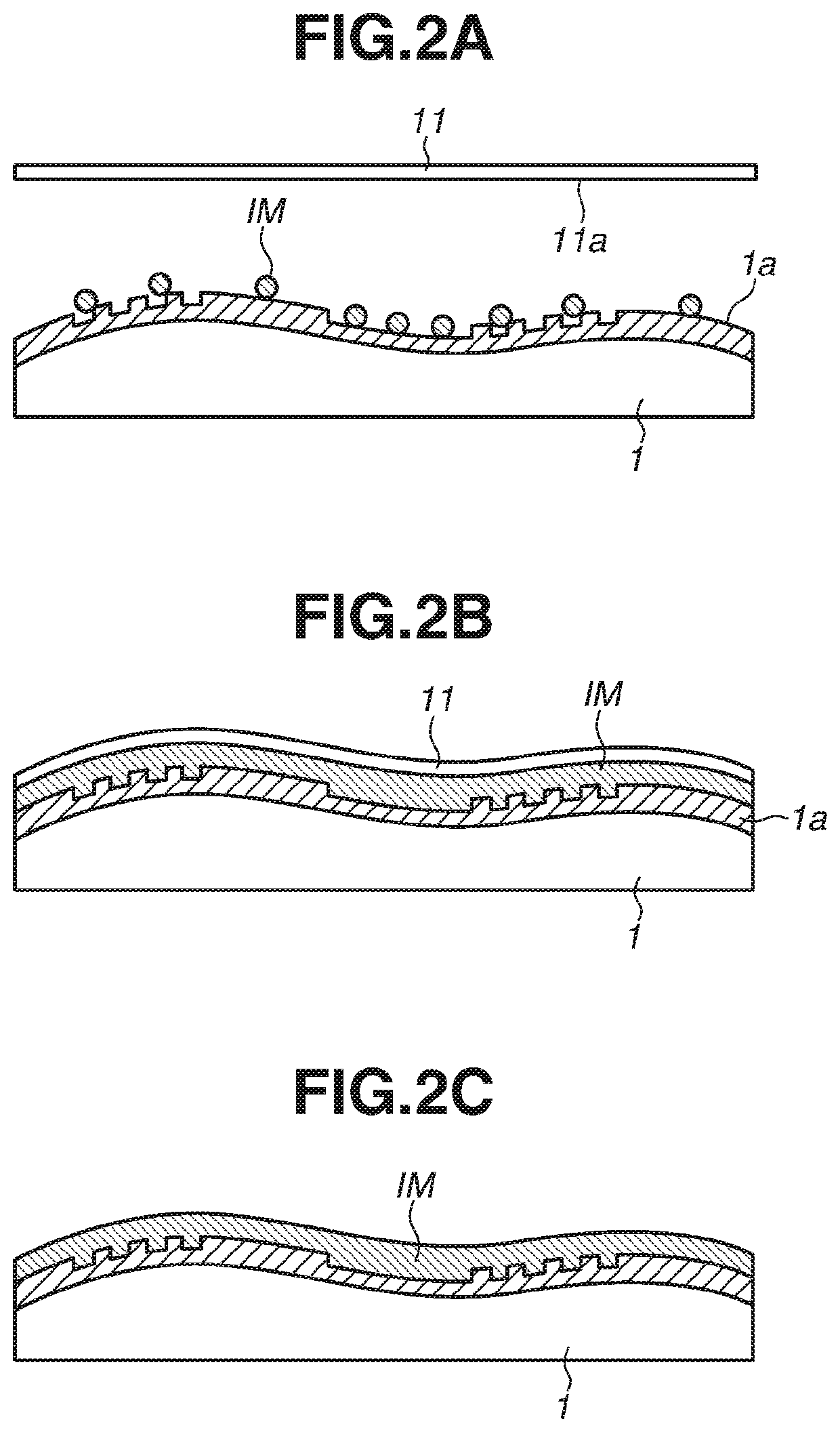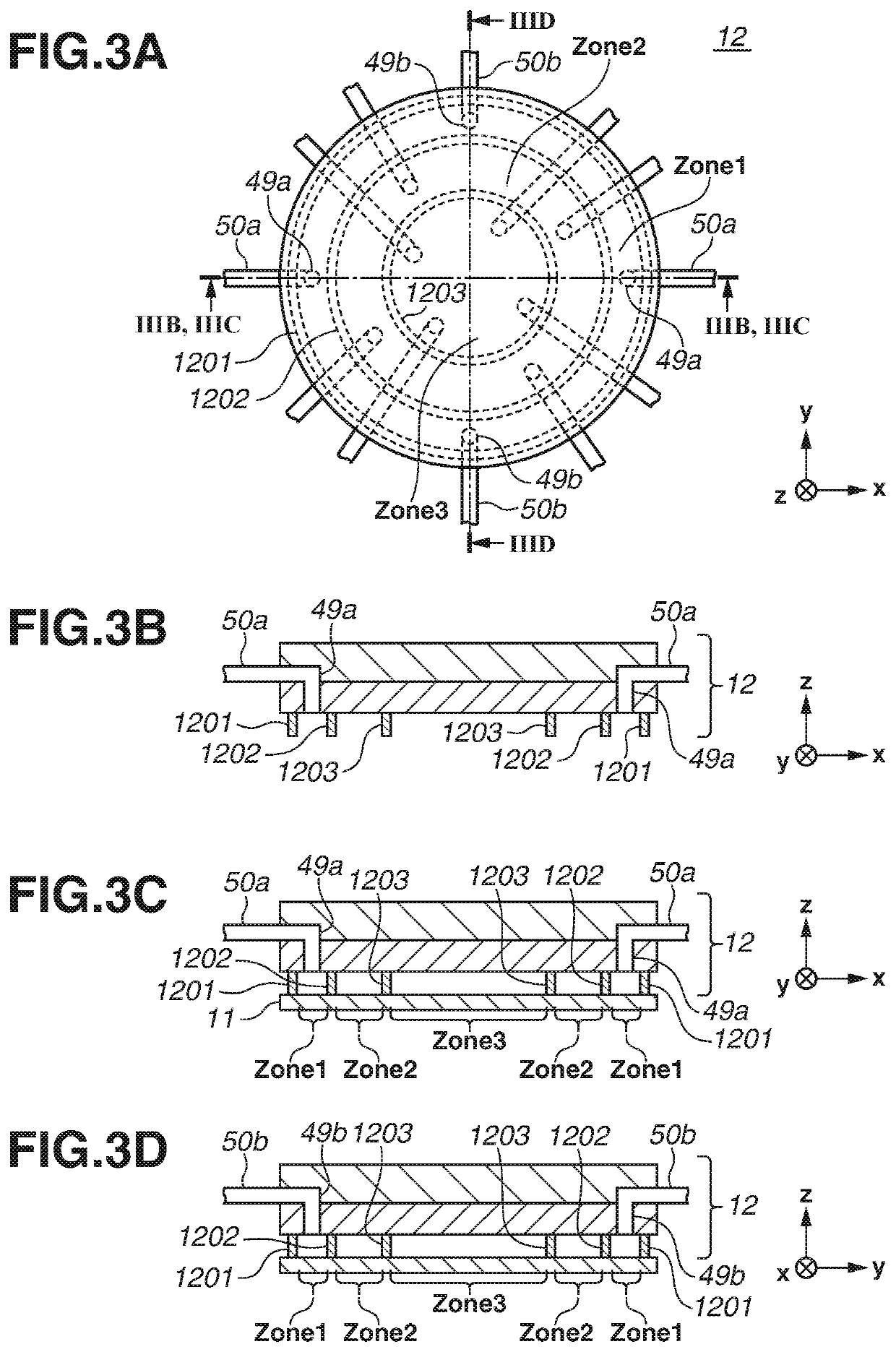Flattening apparatus, article manufacturing method, flattening method, and imprinting apparatus
- Summary
- Abstract
- Description
- Claims
- Application Information
AI Technical Summary
Benefits of technology
Problems solved by technology
Method used
Image
Examples
first exemplary embodiment
[0020]A first exemplary embodiment will be described. FIG. 1 is a schematic diagram illustrating a configuration of a flattening apparatus 100. The flattening apparatus 100 is embodied as a molding apparatus for molding a composition on a substrate 1 by using a mold 11 (template). In the present exemplary embodiment, the flattening apparatus flattens the composition on the substrate 1. The flattening apparatus 100 forms a broad or local flat surface of the composition on the substrate 1 by curing the composition in a state where the component on the substrate 1 is in contact with the mold 11, and then separating the cured composition and the mold 11.
[0021]A typical base material of the substrate 1 is a silicon wafer. However, this is not restrictive. The substrate 1 may be freely selected from among conventional semiconductor device substrates including an aluminum, titanium-tungsten alloy, aluminum-silicon alloy, aluminum-copper-silicon alloy, silicon oxide, and silicon nitride sub...
second exemplary embodiment
[0063]In a second exemplary embodiment, another connection example of through holes in a mold holding unit 12 with a gas supply unit and a vacuum suction pump different from the first exemplary embodiment will be described. The rest of the configuration is similar to that of the first exemplary embodiment, and a description thereof will thus be omitted.
[0064]FIG. 8 is a schematic diagram illustrating connections of the through holes in the mold chuck 12 with gas supply units 54 and vacuum suction pumps 53 according to the present exemplary embodiment. In the first exemplary embodiment, the piping 50a is connected only to the vacuum suction pump 53, and the piping 50b only to the gas supply unit 54. In the present exemplary embodiment, both the piping 50a and the piping 50b are connected to a vacuum suction pump 53 and a gas supply unit 54.
[0065]With such a configuration, the gas control unit 40 can control switching between when the piping 50a is used for gas supply and the piping 5...
PUM
 Login to view more
Login to view more Abstract
Description
Claims
Application Information
 Login to view more
Login to view more - R&D Engineer
- R&D Manager
- IP Professional
- Industry Leading Data Capabilities
- Powerful AI technology
- Patent DNA Extraction
Browse by: Latest US Patents, China's latest patents, Technical Efficacy Thesaurus, Application Domain, Technology Topic.
© 2024 PatSnap. All rights reserved.Legal|Privacy policy|Modern Slavery Act Transparency Statement|Sitemap



